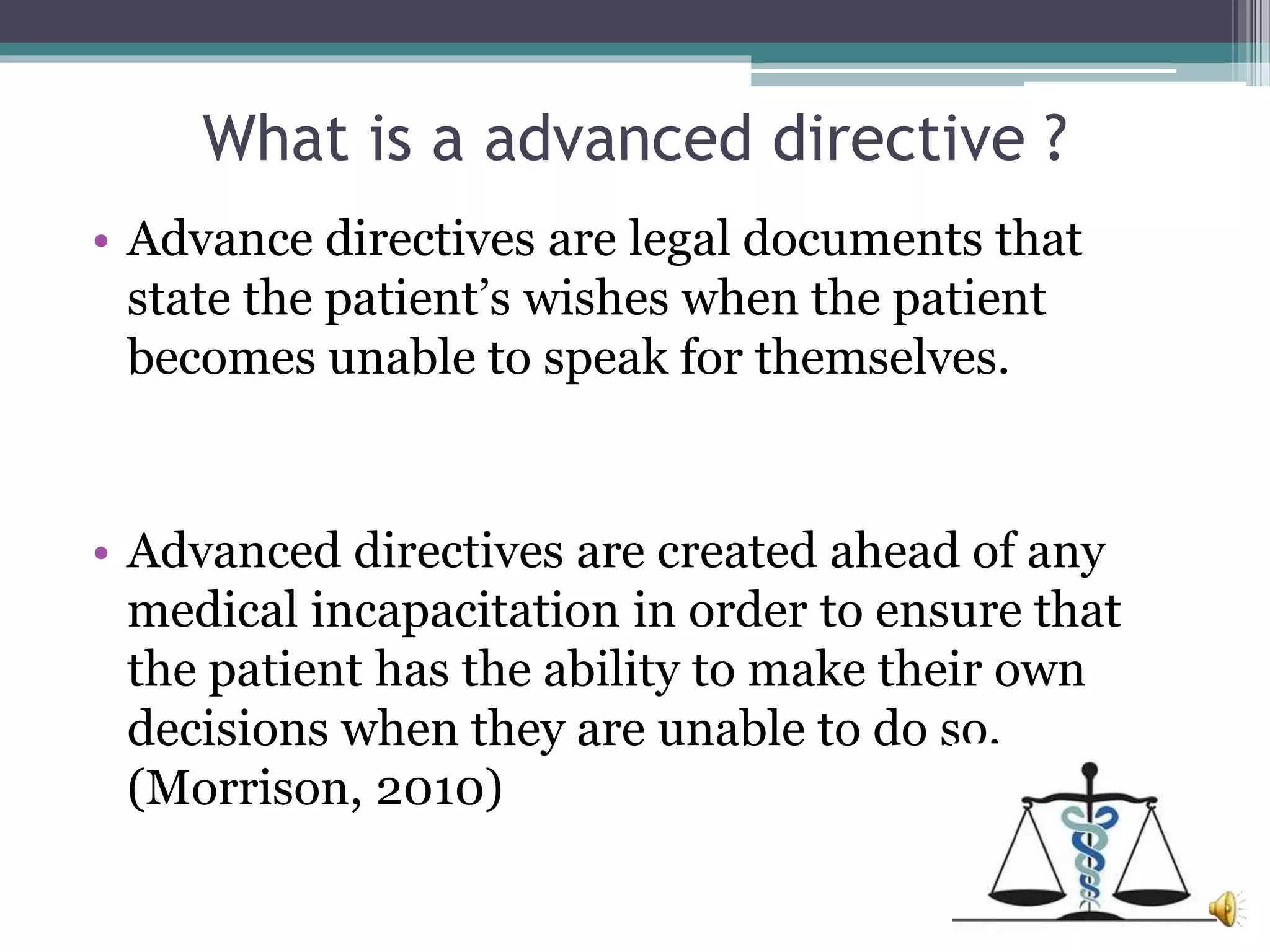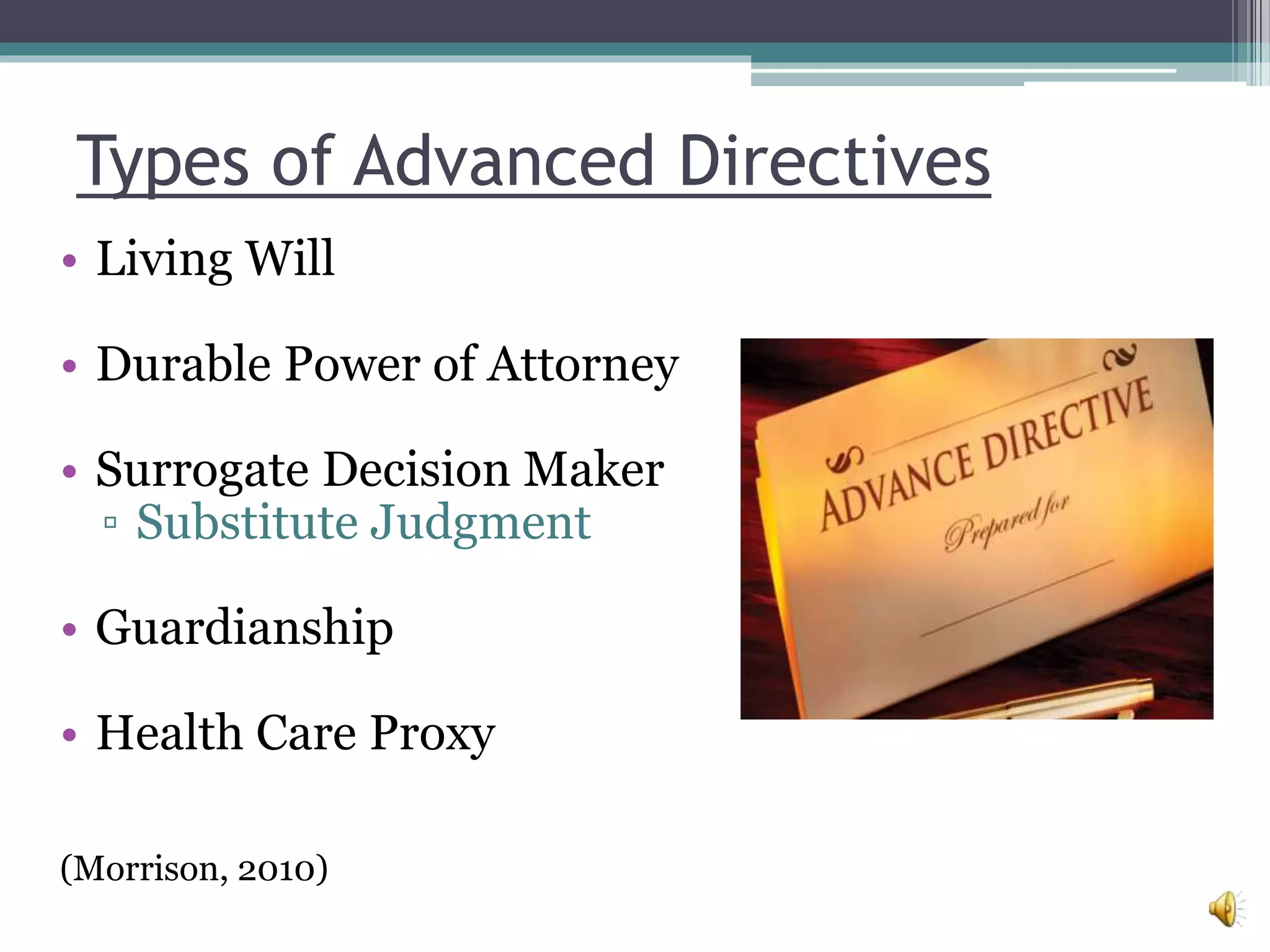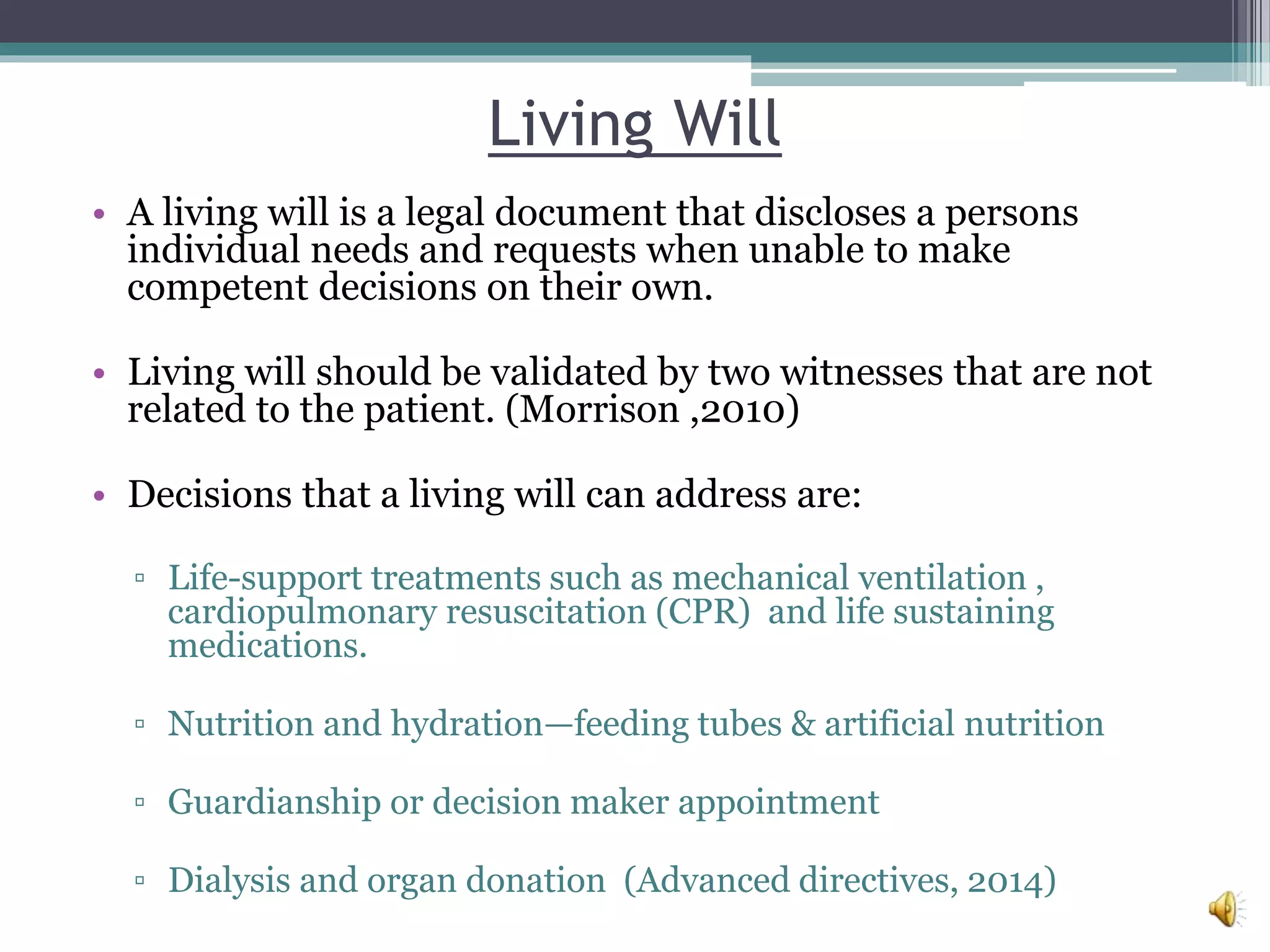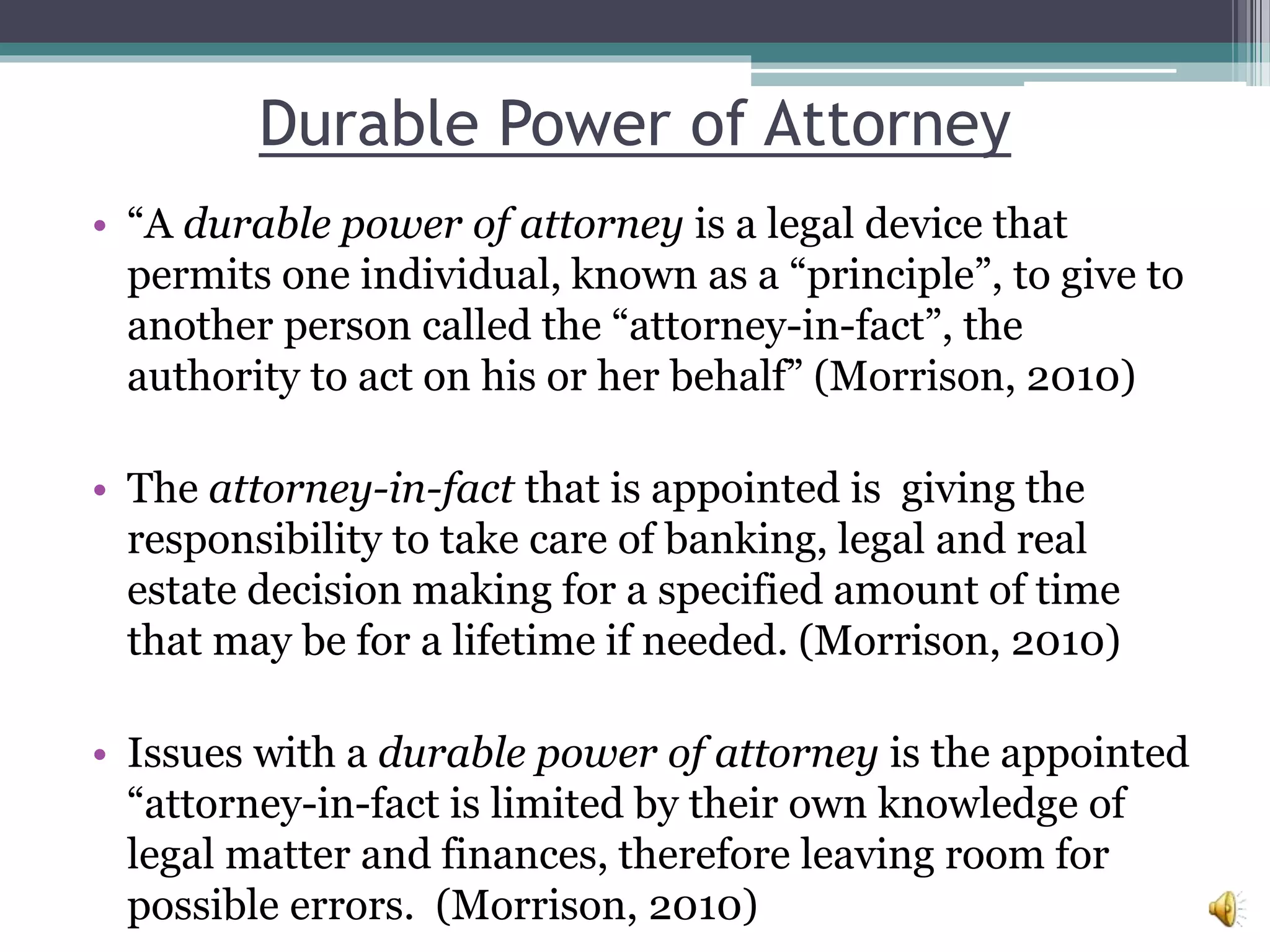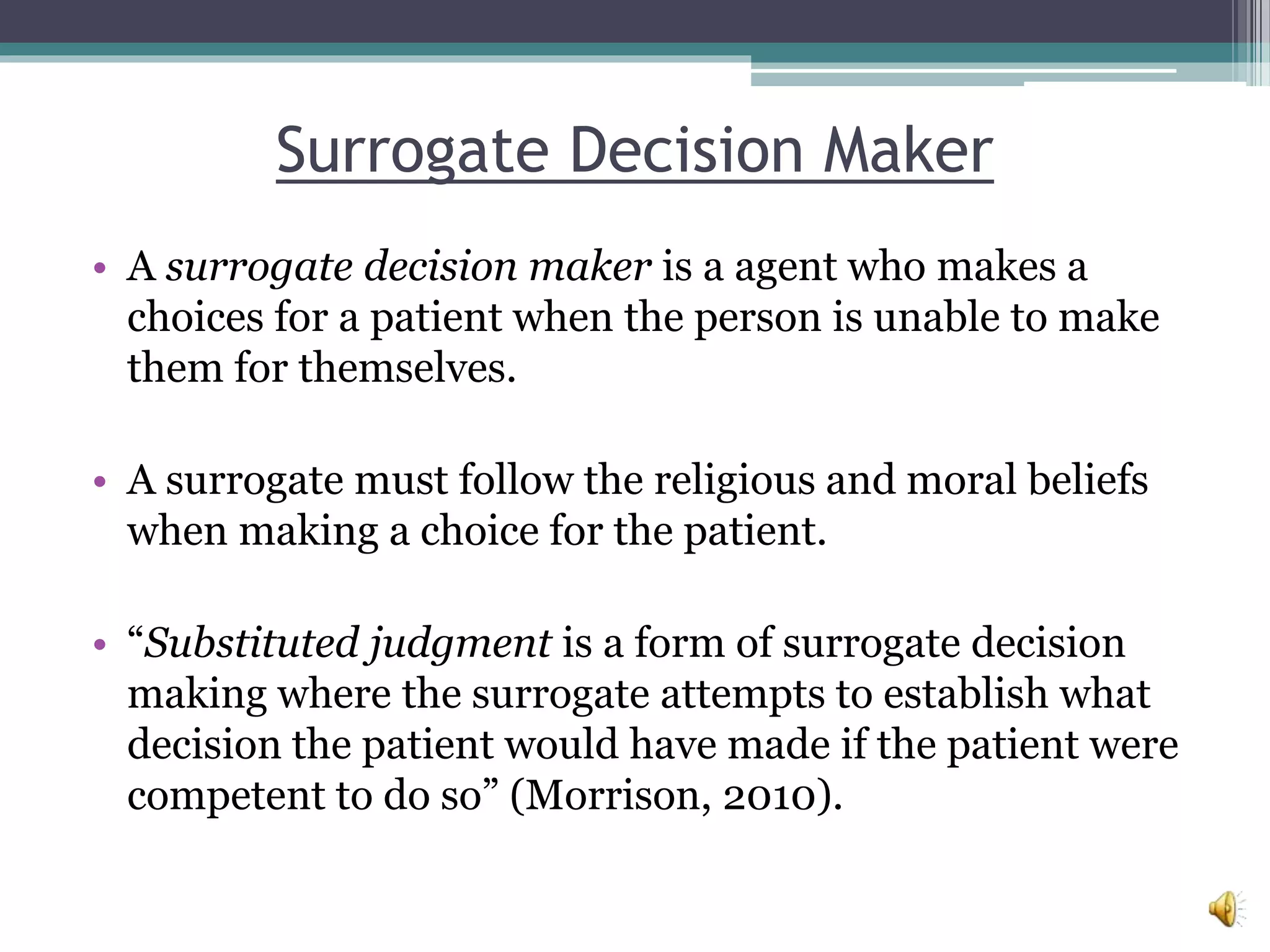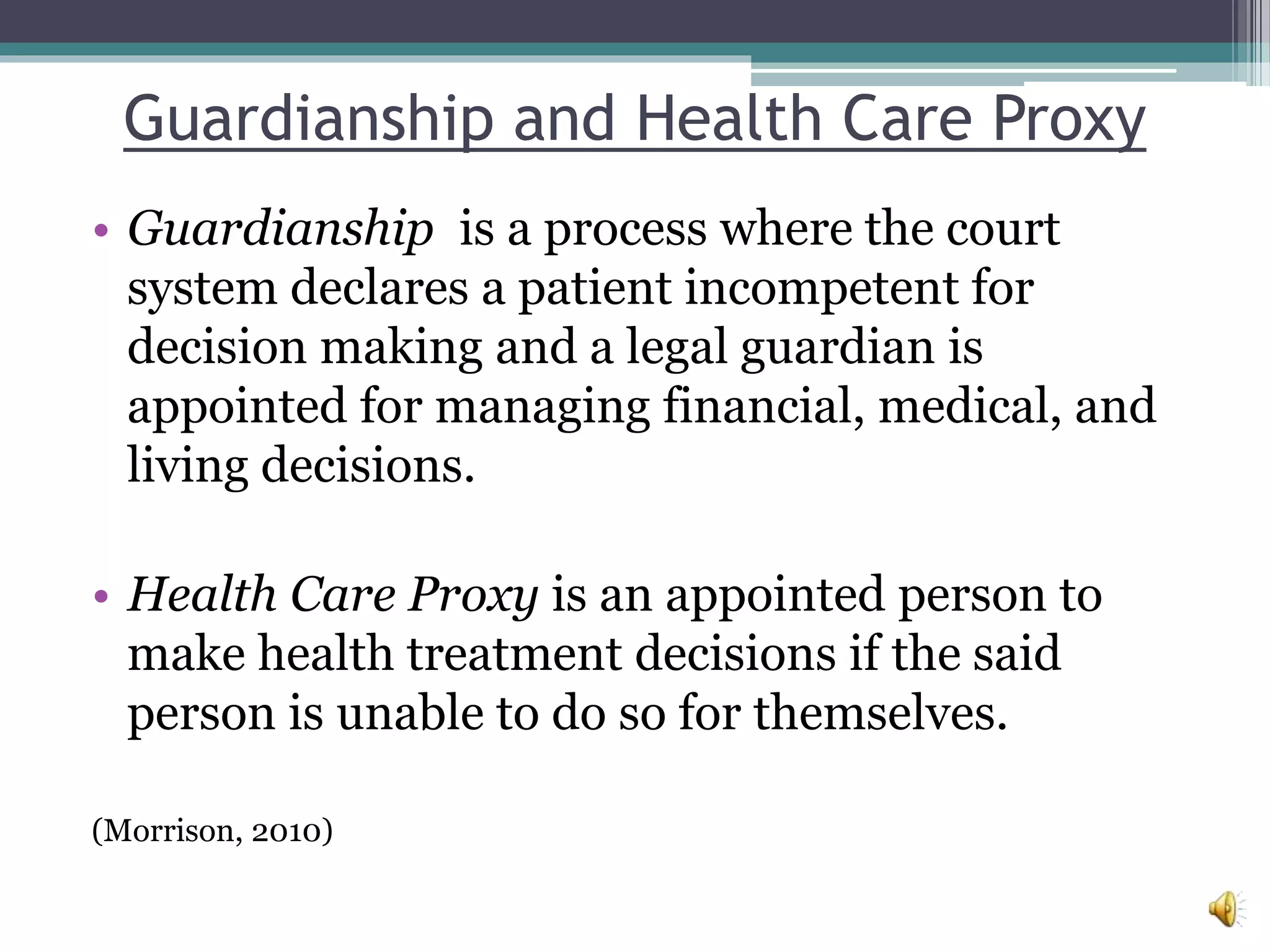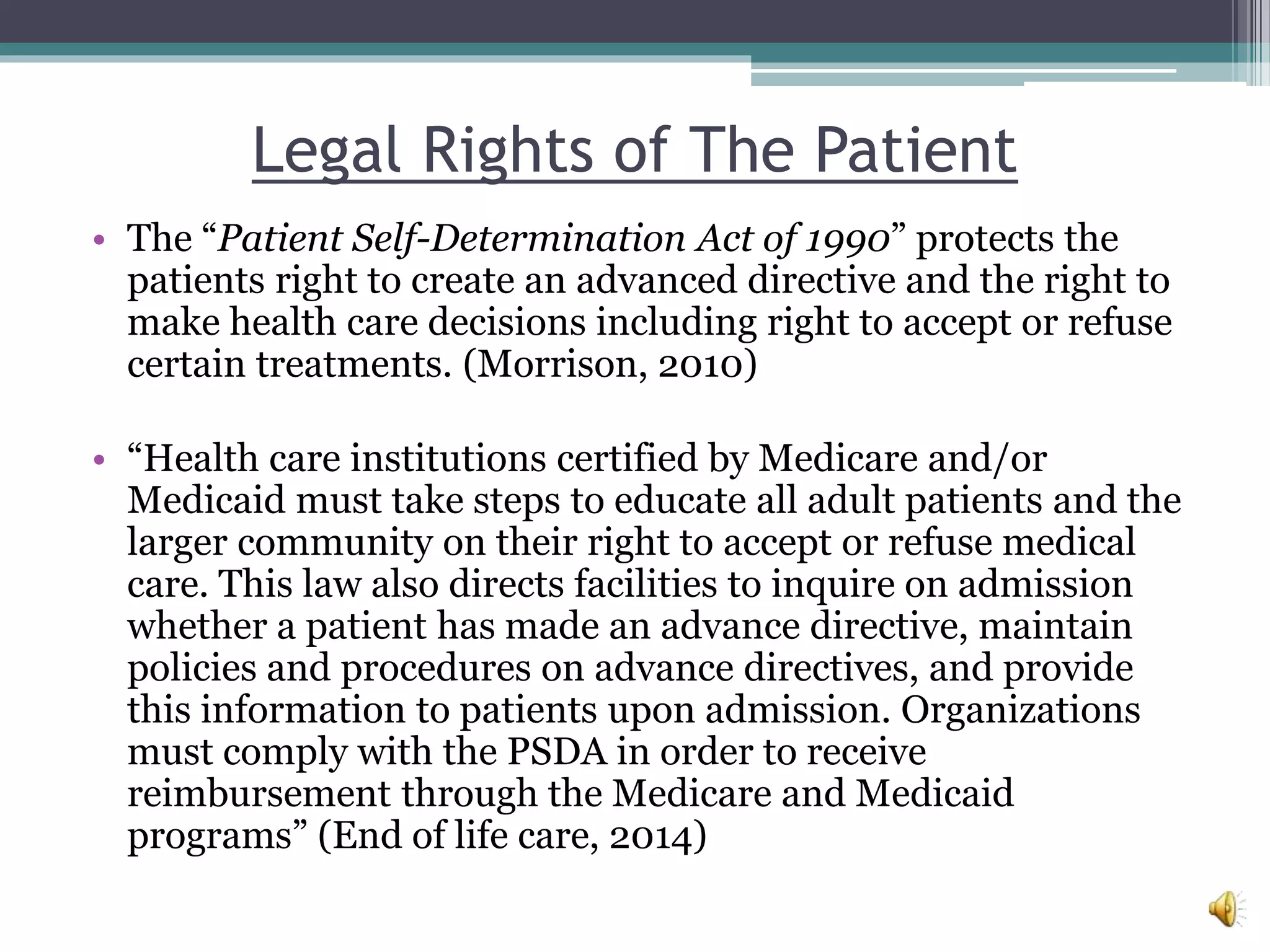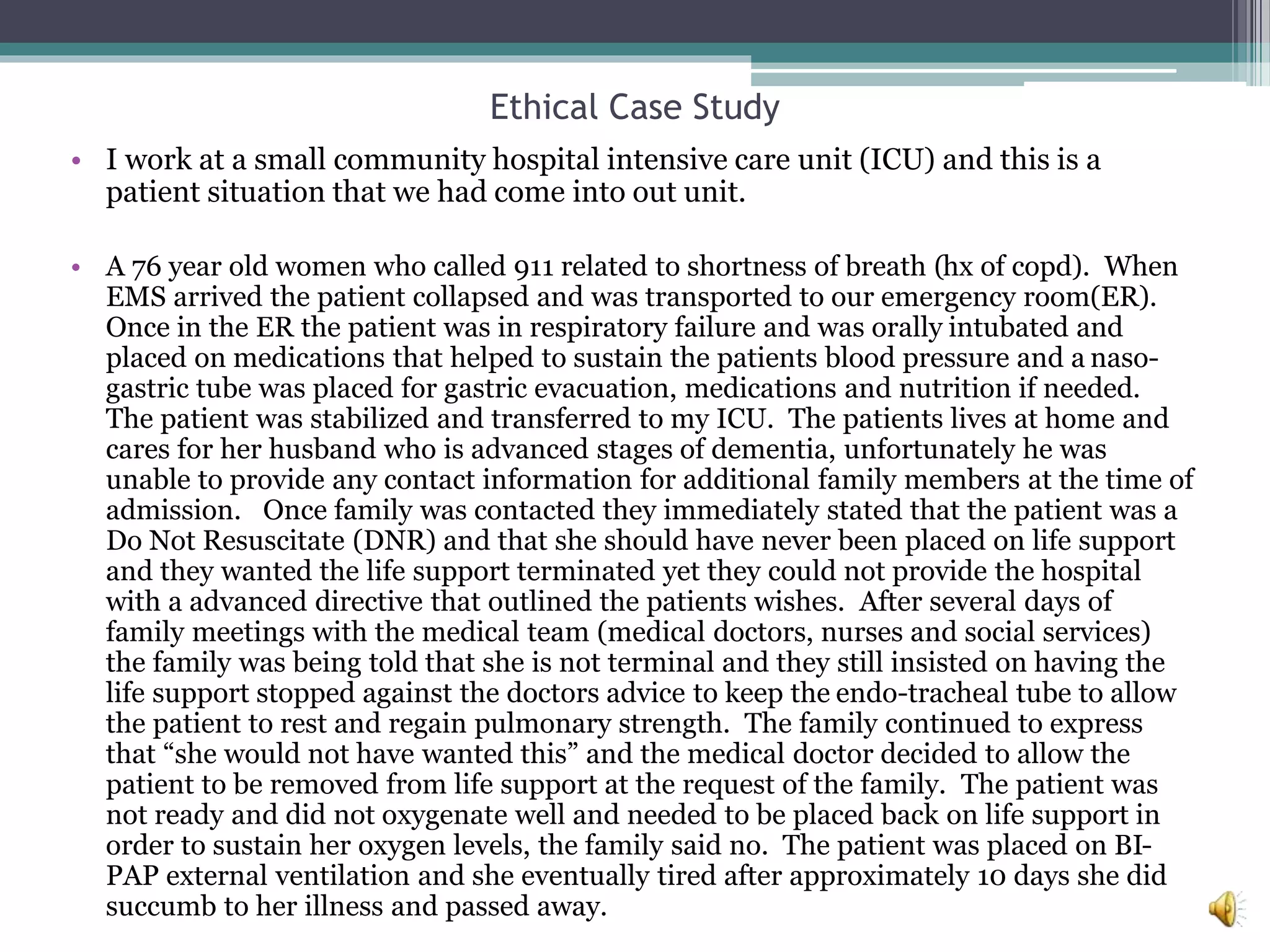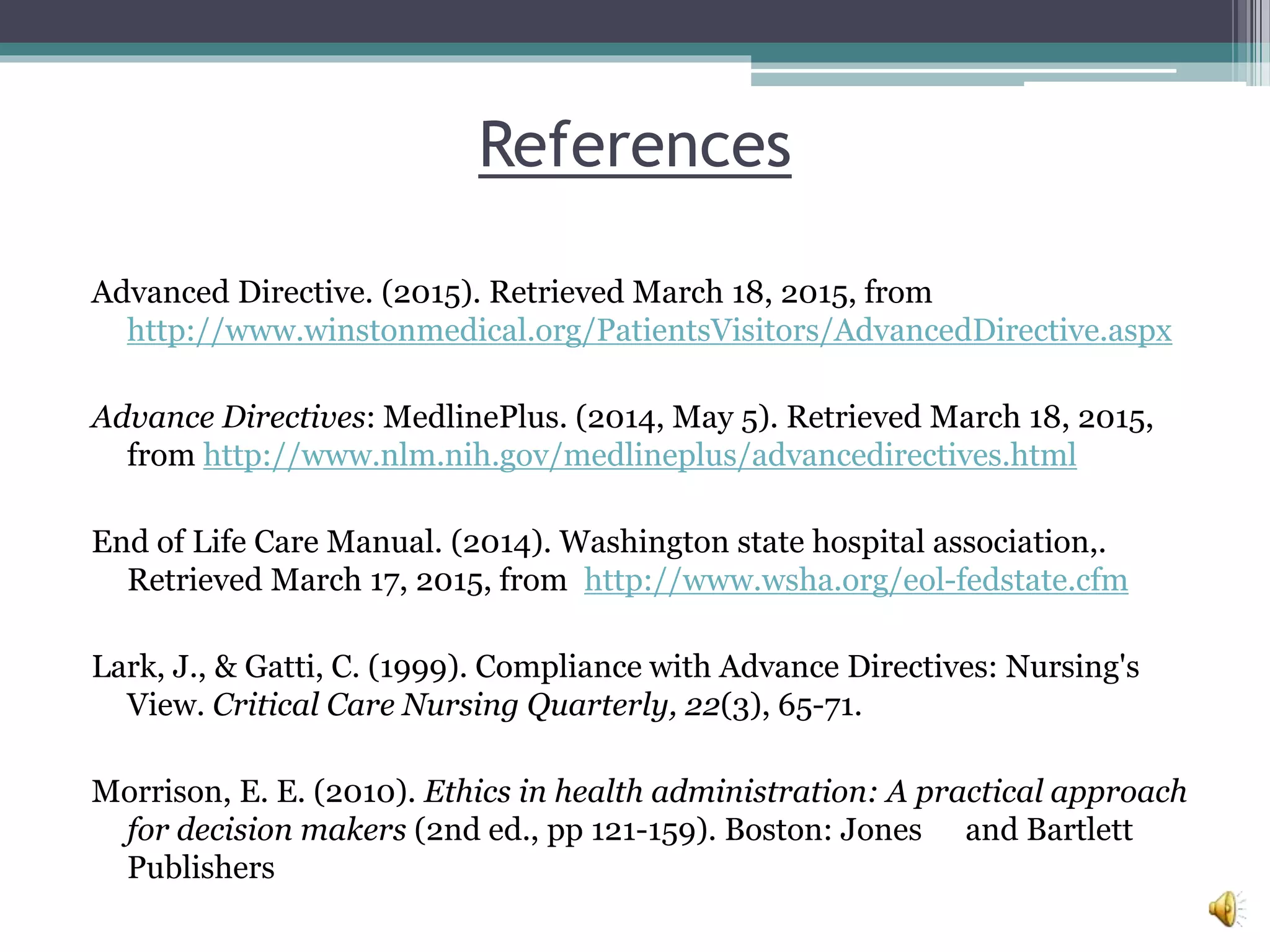Advanced directives are legal documents that specify a person's medical wishes in case they become unable to make decisions themselves. There are several types, including living wills, durable power of attorney, and health care proxies. A living will outlines preferences for life-sustaining treatments. A durable power of attorney designates someone to make medical and financial decisions. Health care proxies appoint a surrogate decision maker. The Patient Self-Determination Act protects patient rights regarding advance directives and medical decision making. However, ethical issues can arise regarding competency determinations and disagreements between patients, families and medical staff over treatment plans.

